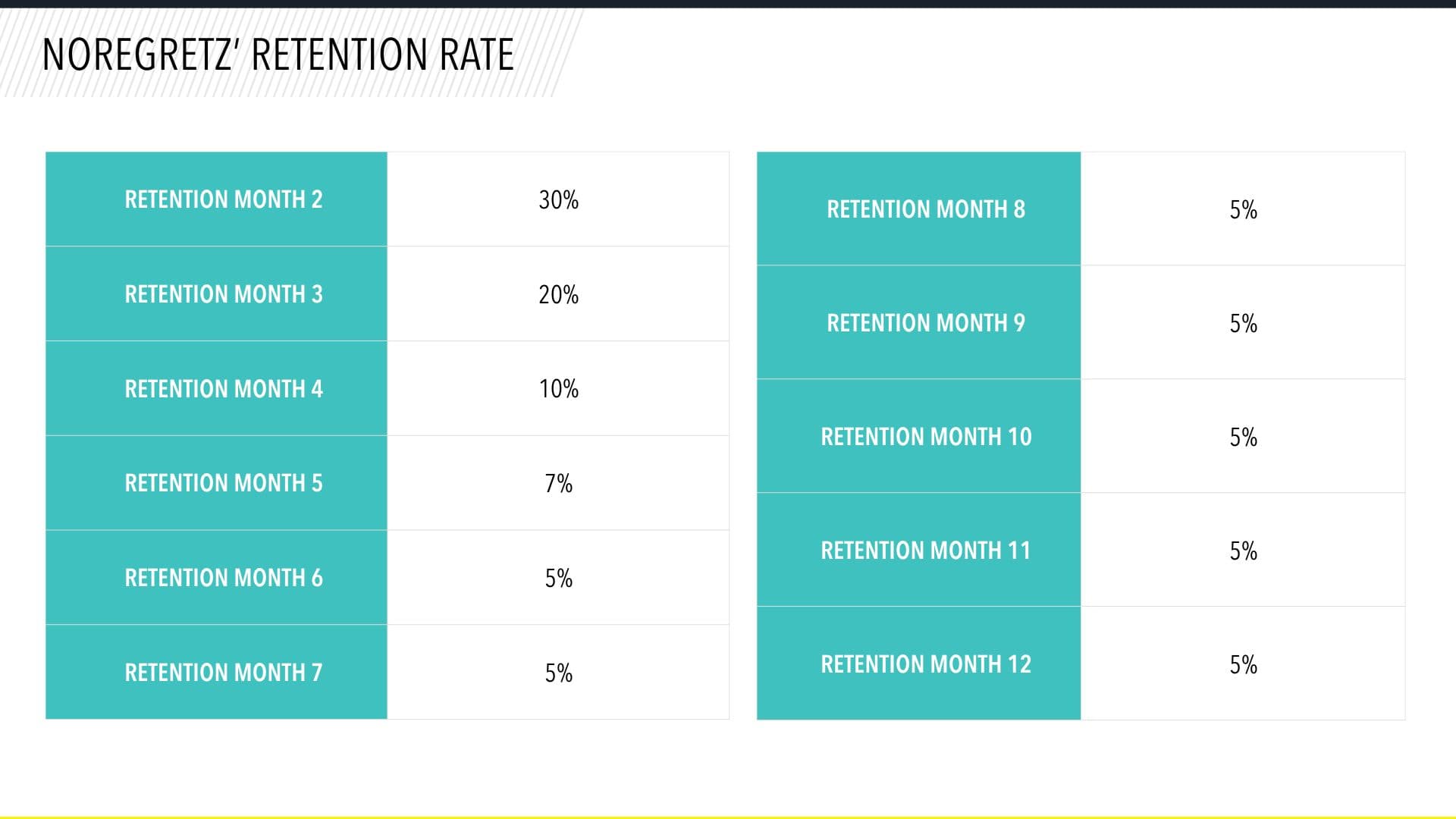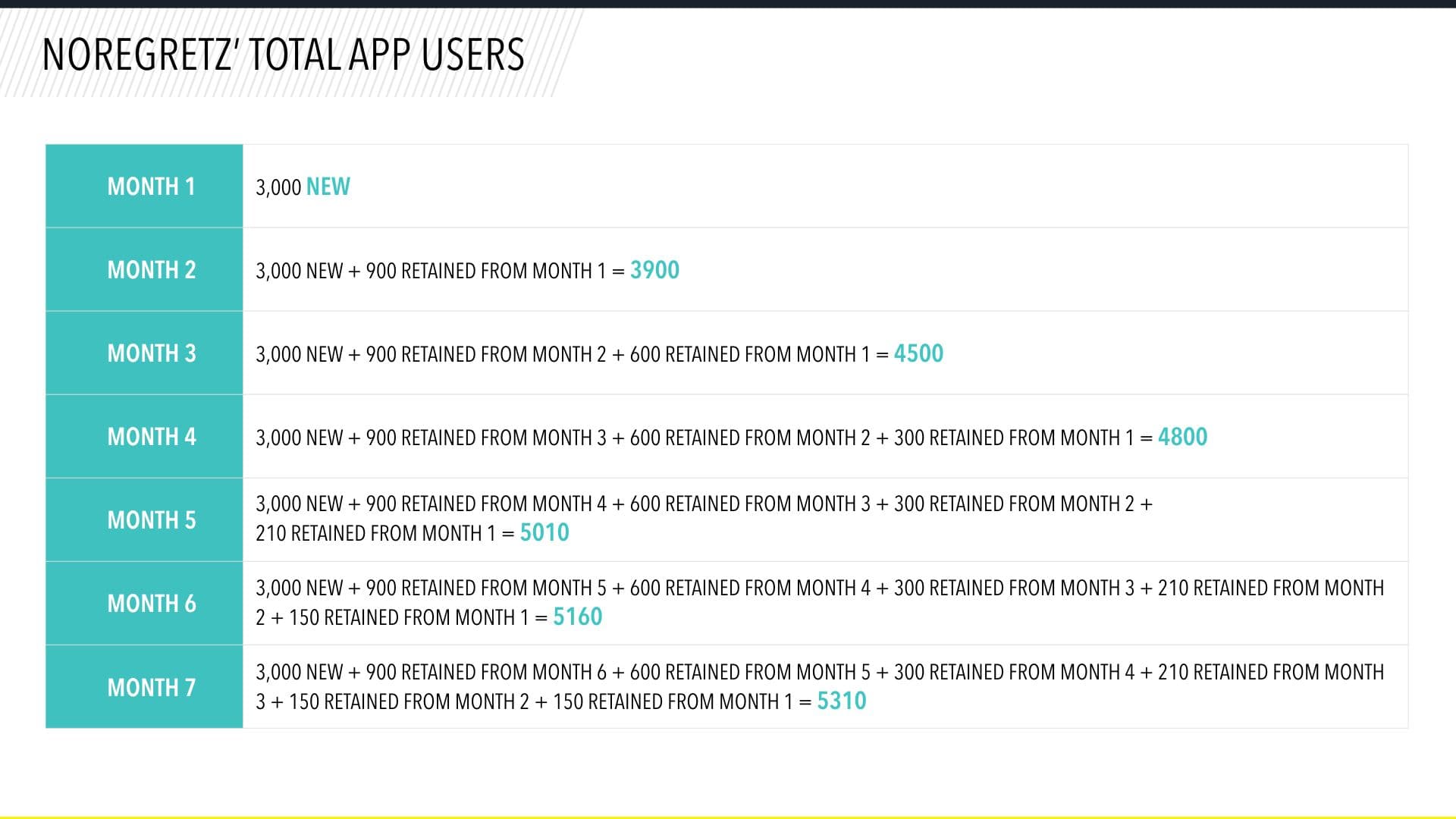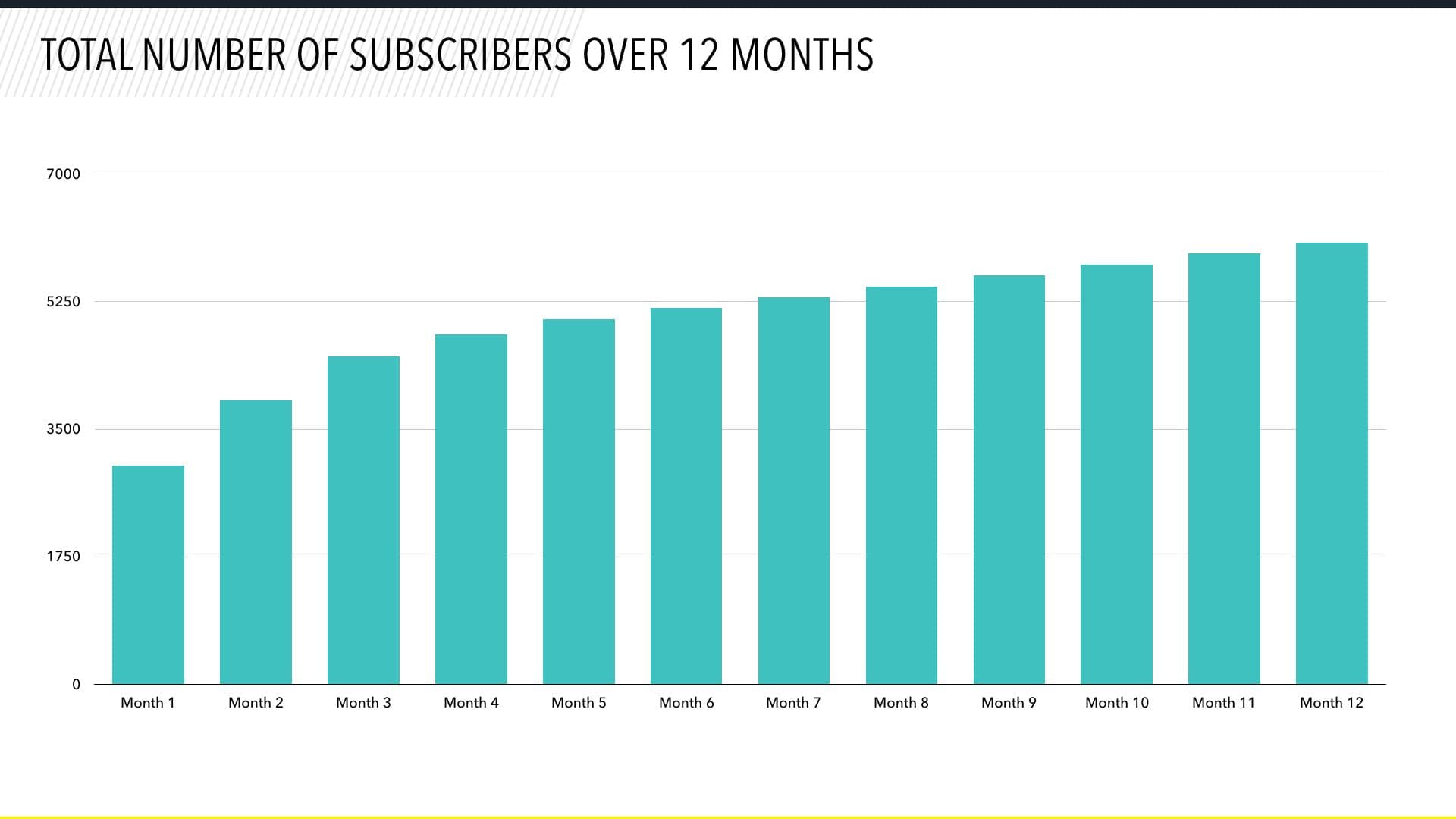Are Your App User Acquisition Dollars Going to Waste?
Published on September 06, 2016/Last edited on September 06, 2016/5 min read


Team Braze
Are you paying for thousands of customers every month, but only keeping hundreds?
Many apps are. App user acquisition is often a focus of marketing teams, and it’s easy to see why—you can’t gain new users without solid advertising and outreach efforts. But what happens to all those users?
According to our Spring 2016 Mobile Customer Retention Report, on day 14, retention rates land around 10%. By day 90, that figure drops to 4%.
That’s a huge issue for apps trying to continuously build their audience (and who isn’t?). To show how acquisition and retention rates impact growth month over month, and year over year, we’re taking the case of a hypothetical app with a hypothetical (but not uncommon) growth and retention rate, and seeing what happens.
Let’s walk through the math with an example
NoRegretz is the definitive (and entirely fictional) app for preventing drunk texts.
How it works: Users log drinks as they’re consumed, and after that third D’USSE, your phone cuts you off ‘til the following morning. Friends with permissions can also trigger the lock-down. (Don’t worry, customers are still able to access their safe list with names like Uber, Mom, 911, and Roommate.)
Why we care: They launched an acquisition campaign, and we’re going to learn from their mistakes.
In the first 30 days: They saw fantastic traction. Downloads poured in. Pun intended. So many people, it turns out, fear themselves with a few drinks in them enough to download an app that will lock them out of their own phones. The marketing team was excited. Their analytics team projected an acquisition rate of 3,000 users each month, for 36,000 at the end of the year! It looked like they were onto something…
Until month two: NoRegretz had acquired their 3,000, but at the 30-day mark, they realized they’d only kept 900. Each month, they were still acquiring 3,000 or so new users each month, but their total active users were far lower. Here’s what their retention rate looked like for users acquired that first month.

And for the sake of simplicity in this model, let’s say that every month over the course of a year, new users followed this same retention pattern.
Here’s what that looks like in terms of the total number of app users each month.

…and so on. From month six and onward, NoRegretz was paying for 3,000 downloads a month and only gaining 150 total app users each month.

By the end of that year: NoRegretz had a total of just 6,060 active users, and no one was sure what they’d done wrong.
True facts: sobering app retention rates
(…Yes, pun intended again)
It’s one thing for NoRegretz to get a bunch of people to download their app, and maybe use it once, but if that growth has no support, their hard-won users will be gone before they know it.
David Skok serves on the boards of more than seven successful digital businesses and calls himself a serial entrepreneur. In a piece for forentrepreneurs.com, he called high acquisition rates a startup killer.
Even as the number of apps installed on the average smartphone rose to 119, the number of apps that most people regularly use has declined, with the average user spending 80% of their mobile app time in their favorite three apps.
According to our research, early and consistent engagement is the key:
- Only 55% of individuals who use an app in the first week after download will be retained (i.e. will show further activity over the next three months)
- 90% of the people who engage weekly for the first month after download are retained, compared to only 23% of people who don’t engage in the second, third and fourth week
Any business, startup or established, needs to measure how much they can spend on acquiring each user against how much that user is likely spend over their lifetime with your service. Getting those eyeballs is key, but keeping them is even more critical. The good news is, keeping them is also less expensive.
Increasing retention by 5% can increase profits by more than 25%
A 1990 Harvard Business School study showed that increasing retention rates in any commerce-centered business could increase profits by 25%-95%. In 2000, the same group applied those findings to the world of ecommerce and “found classic loyalty economics at work.” This means that you can still increase profits in your business by putting the focus on retention.
How to implement long-term relationship efforts
Create an onboarding checklist to make sure you’re getting an early start on retention. Keep an eye out for customers who are beginning to engage less consistently and reach into your mobile messaging tool belt to see if you can draw them back in. Know where your customers are at each stage of their lifecycle, and have a plan to touch them as they move through the lifecycle and the funnel.
NoRegretz might be the smartest service to grace smartphones, but in today’s marketplace, an acquisition plan that excludes retention won’t get them too far. Retention plans and strategies can coexist beside any acquisition or engagement campaign. A bit like closing time, without retention, you might not necessarily have to go home. But you certainly can’t grow.
Be Absolutely Engaging.™
Sign up for regular updates from Braze.
Related Content
View the Blog
How behavioral marketing turns data into personalized experiences

Team Braze

The new inbox reality: How iOS changes are reshaping email marketing

Aparna Prasad

Experience optimization: Turning data insights into better journeys
